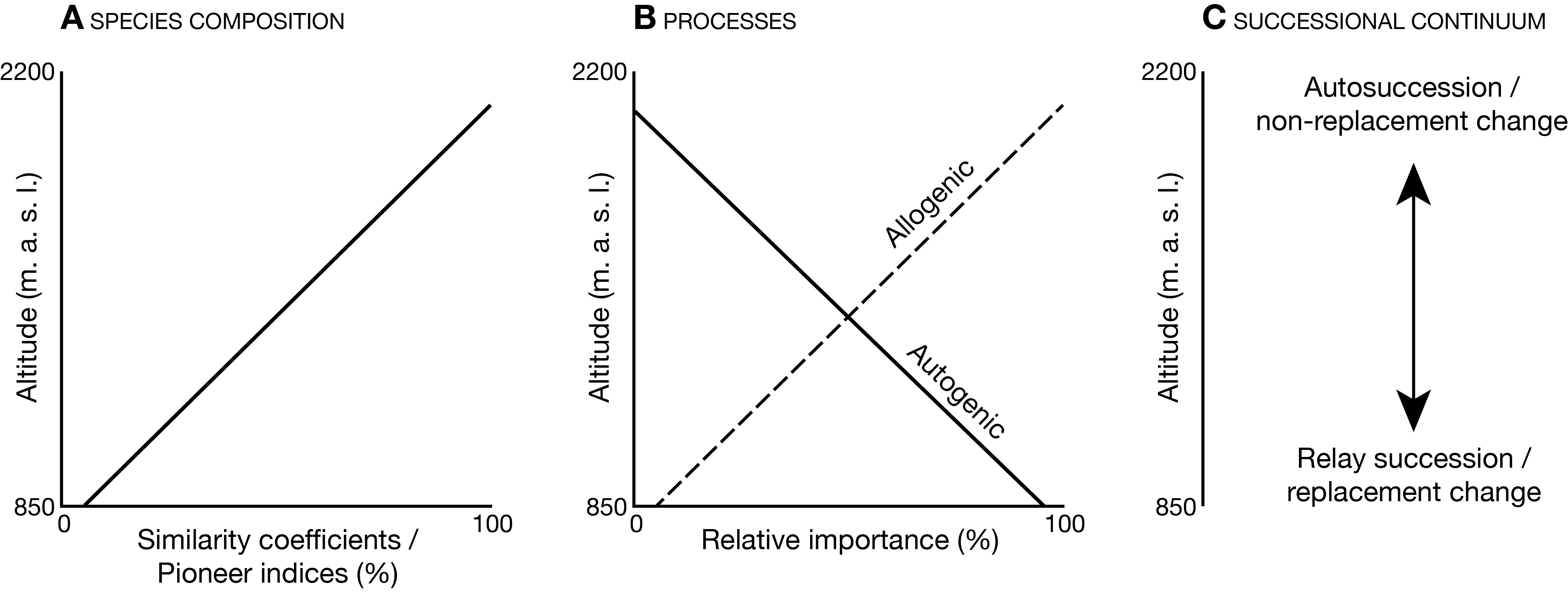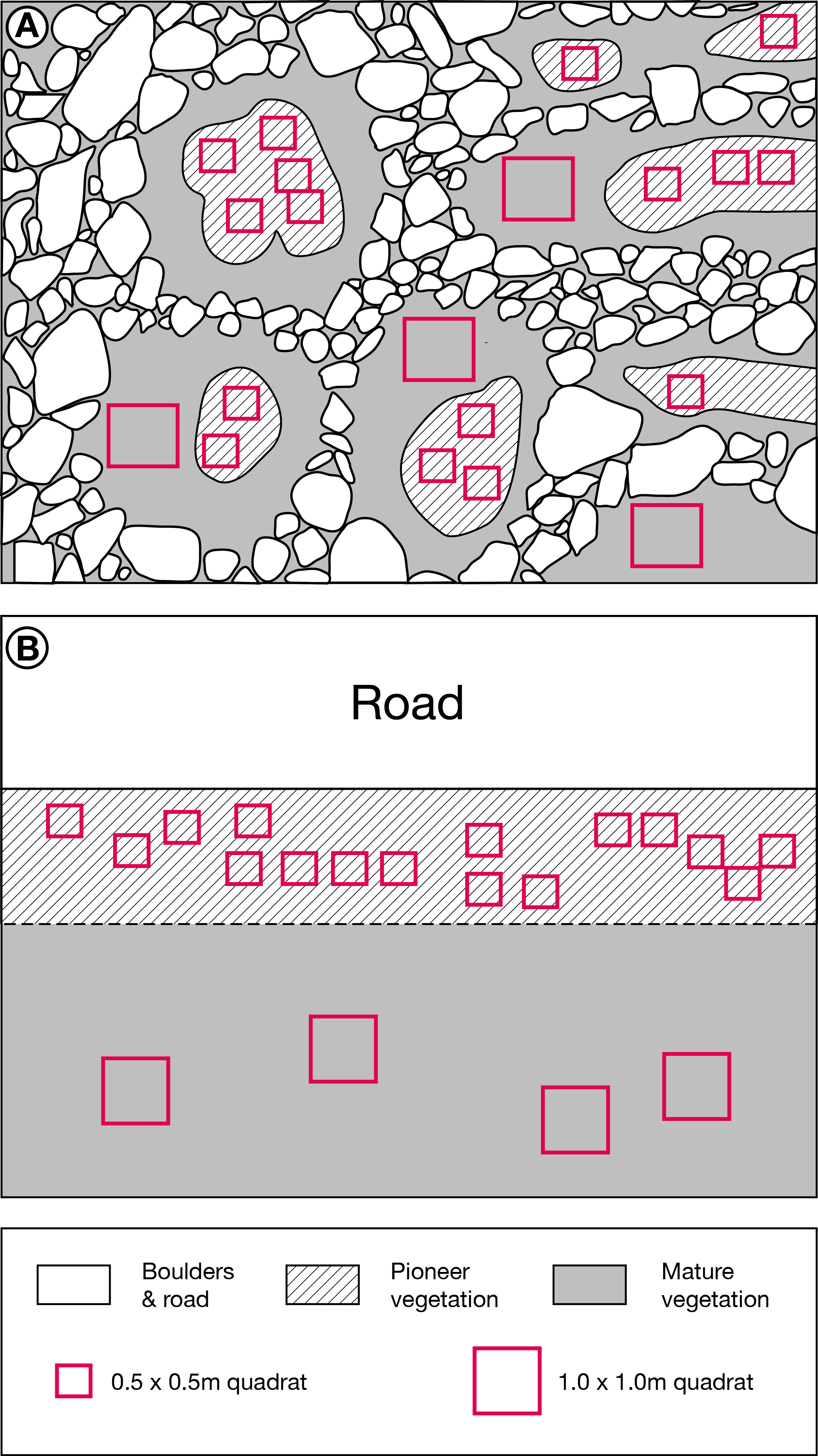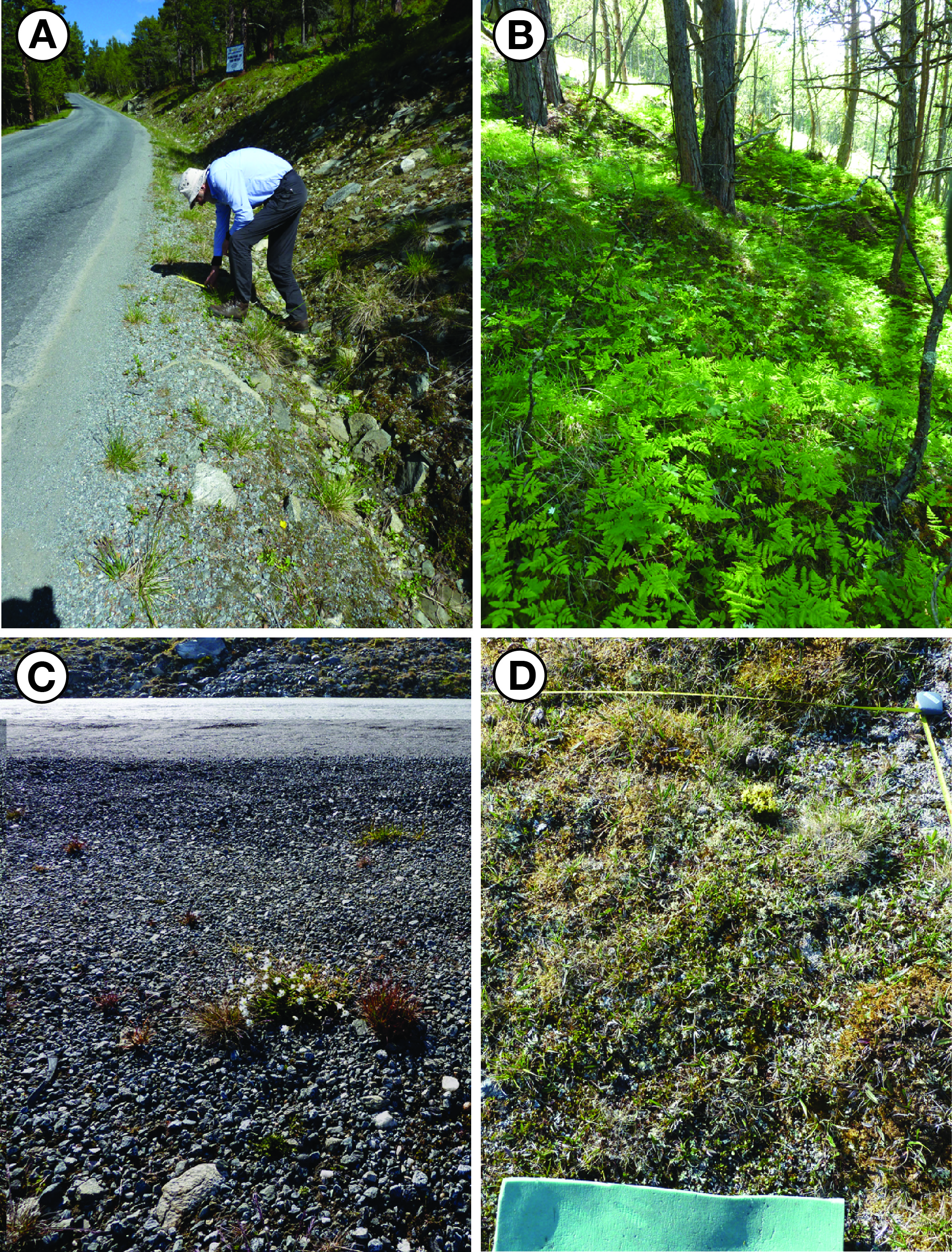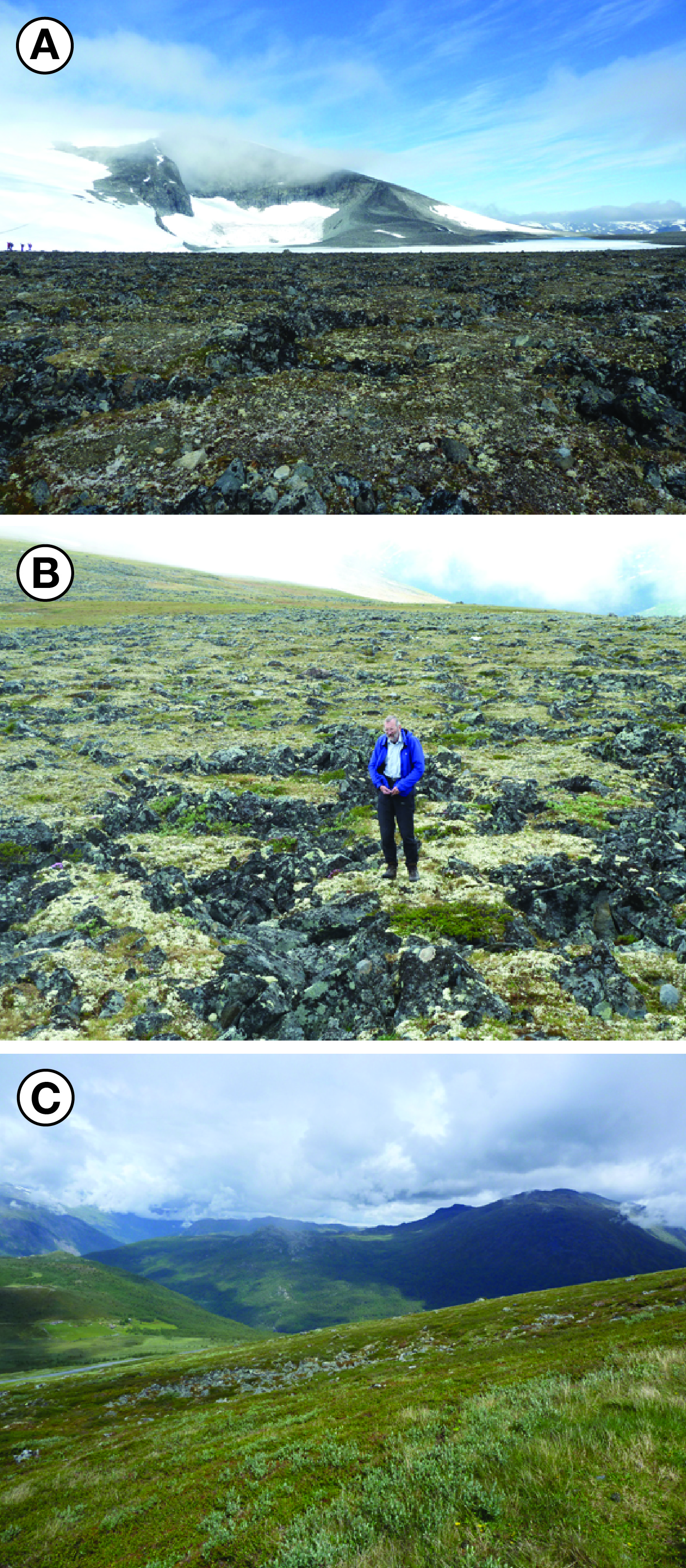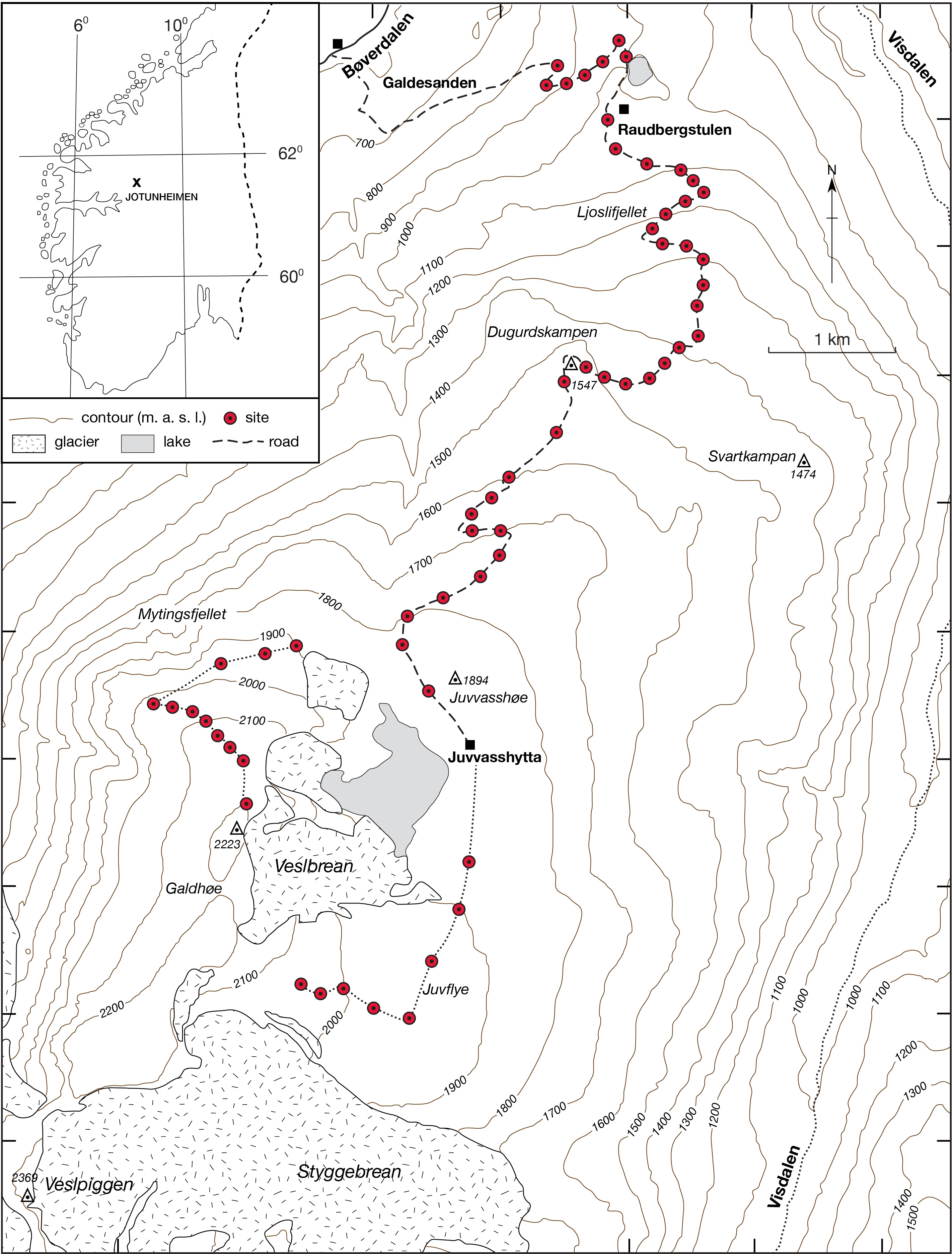John A. Matthews
Autosuccession in alpine vegetation: Testing the concept on an altitudinal bioclimatic gradient, Jotunheimen, southern Norway
Matthews, John A.; Hill, Jennifer L.; Winkler, Stefan; Owen, Geraint; Vater, Amber E.
Authors
Jenny Hill Jennifer.Hill@uwe.ac.uk
Associate Professor in Teaching and Learning
Stefan Winkler
Geraint Owen
Amber E. Vater
Abstract
© 2018 Elsevier B.V. Specific tests of autosuccession (equivalent to non-replacement change in species composition) are made, in which pioneer communities on roadside verges and areas of patterned ground disturbed by cryoturbation are compared with mature communities on a bioclimatic gradient from sub-alpine woodland (850 m a.s.l) to high-alpine fjellfield (2200 m a.s.l). Autosuccession is quantified for the first time using community similarity coefficients and indices of pioneer persistence and importance, which measure nominal- or ordinal-scale differences in species composition between 65 paired pioneer and mature communities. Linear relationships to altitude, with coefficient and index values of ~90–100% in the upper part of the high-alpine belt to ~10–20% in the sub-alpine zone, indicate a continuum from autosuccession to relay succession (the latter characterised by high species turnover and replacement change). Values based on ordinal-scale data are generally ~10% lower than those based on nominal-scale data and use of pioneer sites from roadside verges result in a ~20% offset relative to pioneer sites from sorted circles (the latter comparison reflecting the effect of substrate differences). Autosuccession appears to be characteristic only at altitudes >2000 m a.s.l. in the upper high-alpine belt. Replacement change increases in importance as a constituent of mixed-mode succession through the conventional mid- and low-alpine belts. Spatial variation in the nature of primary succession along the bioclimatic gradient supports a geo-ecological model of succession with predominantly allogenic controls (climatic stress and high levels of substrate disturbance by cryoturbation) at high altitudes and increasing autogenic controls (biological interactions and substrate stability) at lower altitudes.
| Journal Article Type | Article |
|---|---|
| Acceptance Date | Jun 9, 2018 |
| Online Publication Date | Jun 18, 2018 |
| Publication Date | Nov 1, 2018 |
| Deposit Date | Jun 20, 2018 |
| Publicly Available Date | Jun 18, 2019 |
| Journal | Catena |
| Print ISSN | 0341-8162 |
| Publisher | Elsevier |
| Peer Reviewed | Peer Reviewed |
| Volume | 170 |
| Pages | 169-182 |
| DOI | https://doi.org/10.1016/j.catena.2018.06.012 |
| Keywords | autosuccession, relay floristics, alpine vegetation, altitudinal zonation, community similarity coefficients, pioneer persistence index, plant succession models |
| Public URL | https://uwe-repository.worktribe.com/output/856618 |
| Publisher URL | https://doi.org/10.1016/j.catena.2018.06.012 |
| Additional Information | Additional Information : This is the author's accepted manuscript. The final published version is available here: https://doi.org/10.1016/j.catena.2018.06.012. |
| Contract Date | Jun 20, 2018 |
Files
Autosuccession - Table 3 (1).pdf
(104 Kb)
PDF
Autosuccession - Table 2 (1).pdf
(102 Kb)
PDF
Autosuccession - Table 1 (1).pdf
(216 Kb)
PDF
Autosuccession - revised text - CLEAN (1).pdf
(172 Kb)
PDF
Autosuccession fig 6.jpg
(500 Kb)
Image
Autosuccession fig 5.jpg
(6.4 Mb)
Image
Autosuccession fig 4.jpg
(2.5 Mb)
Image
Autosuccession fig 3 A-D.jpg
(12.3 Mb)
Image
Autosuccession fig 2 A-C.jpg
(6.2 Mb)
Image
Autosuccession fig 1.jpg
(1.9 Mb)
Image
Autosuccession - Table 3.doc
(25 Kb)
Document
Autosuccession - Table 2.doc
(24 Kb)
Document
Autosuccession - Table 1.doc
(44 Kb)
Document
Autosuccession - revised text - CLEAN.doc
(240 Kb)
Document
You might also like
Developing self-authorship through participation in student research conferences
(2015)
Presentation / Conference Contribution
Understanding tourist encounters with nature: a thematic framework
(2013)
Journal Article
Downloadable Citations
About UWE Bristol Research Repository
Administrator e-mail: repository@uwe.ac.uk
This application uses the following open-source libraries:
SheetJS Community Edition
Apache License Version 2.0 (http://www.apache.org/licenses/)
PDF.js
Apache License Version 2.0 (http://www.apache.org/licenses/)
Font Awesome
SIL OFL 1.1 (http://scripts.sil.org/OFL)
MIT License (http://opensource.org/licenses/mit-license.html)
CC BY 3.0 ( http://creativecommons.org/licenses/by/3.0/)
Powered by Worktribe © 2025
Advanced Search

